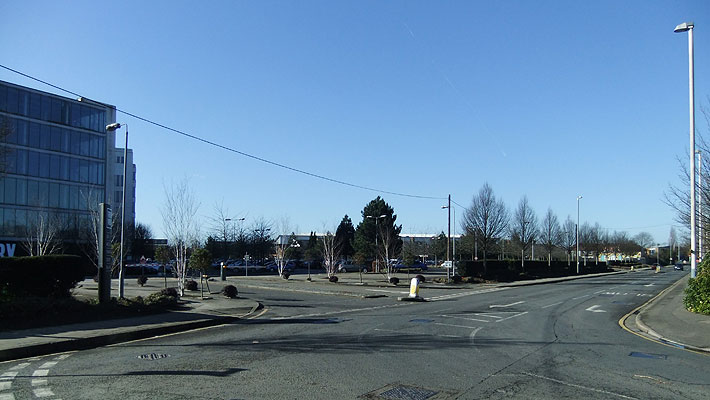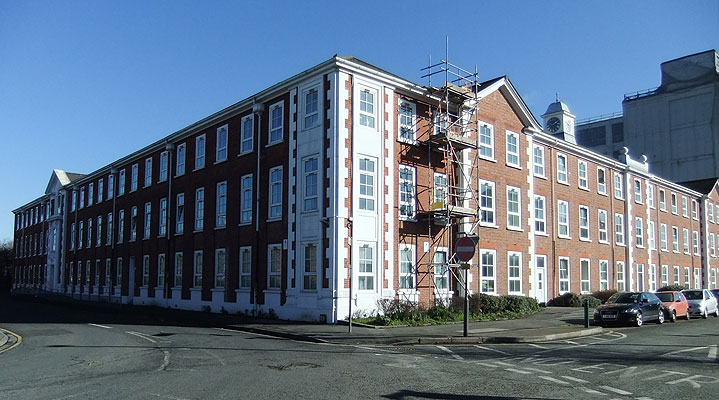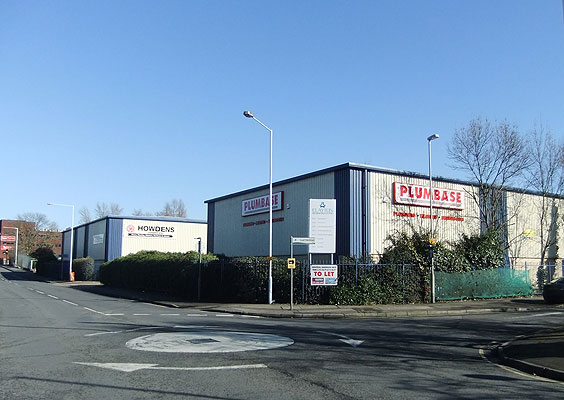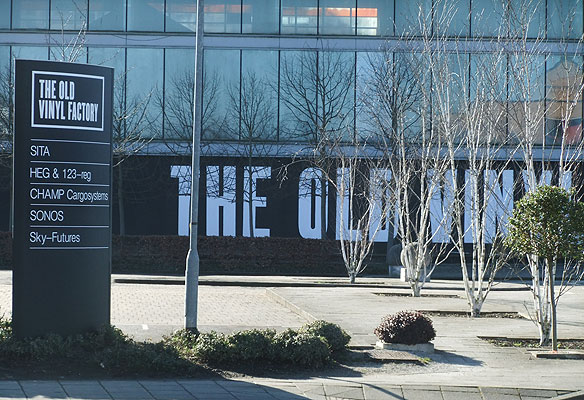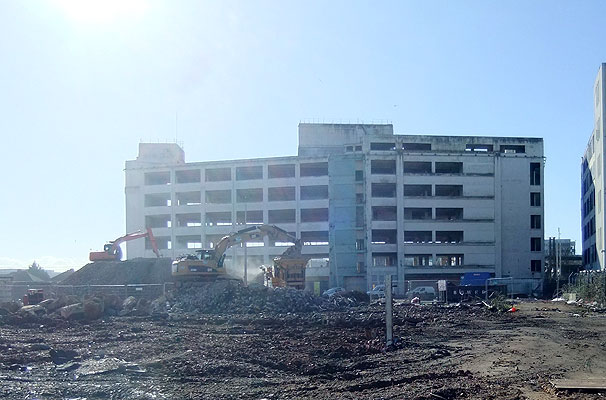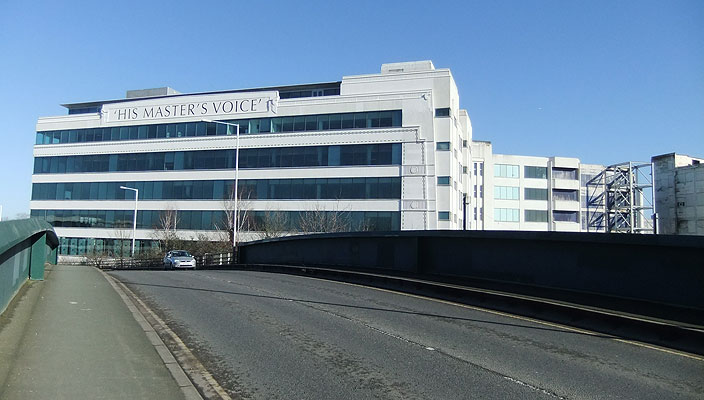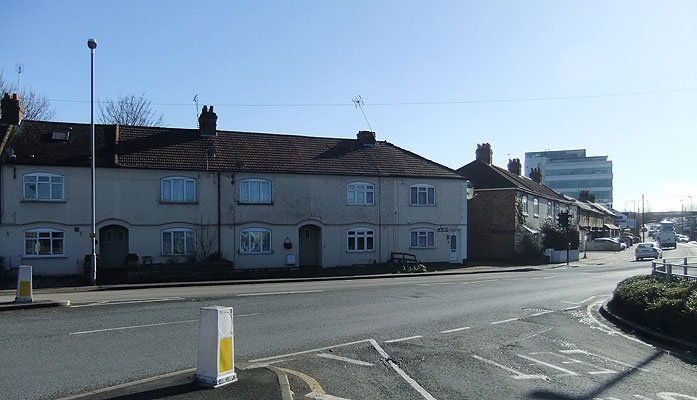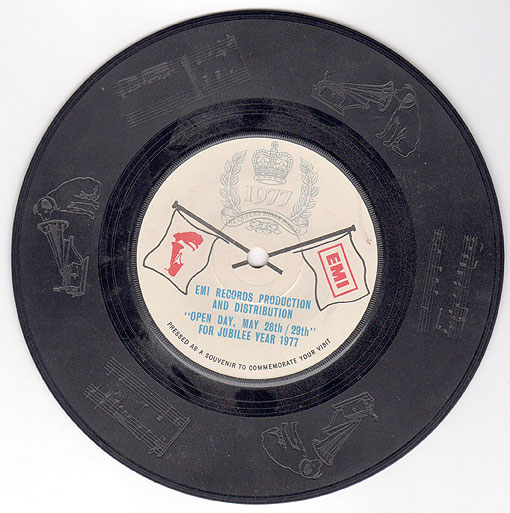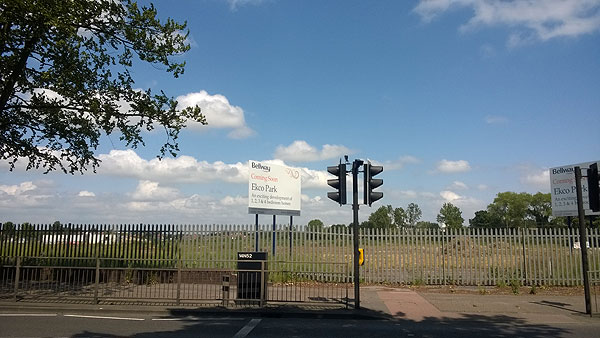In the Sixties, Alan Hardy and Chris Payne were apprentices at EMI in Hayes, where the record pressing plant was required to keep up with the huge demand for Beatles recordings alongside those of numerous other up-and-coming stars. Chris and I first met when we both joined EMI in September 1966 as apprentices studying electronics. Although most people knew EMI as a record company, with the famous Abbey Road studios and music headquarters in London, this was only a small part of its activities. The main company base was in Hayes, west of London, at that time employing about 22,000 staff and covering 150 acres around the Blyth Road area. Over the years EMI's activities included developing stereo sound, medical scanners, airborne radar and television cameras for example. It also produced recording tape and was heavily involved in military electronics. (Above, left) Alan (with mic) and Chris broadcast during a Radio West Mid Anniversary event In those days when we came out onto Blyth Road, looking left, we could first see a low-level Personnel building and further along the road one of our favourite lunchtime haunts, the Staff Sales Shop – where we'd not only get discounted records but deleted stock sold very cheaply. Sadly no more Staff Sales (or Personnel)!
Some of the original buildings on Blyth Road still remain as an industrial area called 'The Old Vinyl Factory'.
The vinyl that is now produced is actually in another of the older buildings adjacent to the Head Office, called Enterprise House.
Our old building is about to come down
The former record factory has been demolished and the apprentice training school is soon to follow
Chris used to stay in a B & B nearby on Dawley Road… (below) so it only took him three minutes to get to work!
The whole area is under major development by the Cathedral group. It's worth having a quick look at their website to see not only what the area looked like in its golden days, but also the company's plans for the future. Says the website: "We believe that this (former EMI) site is part of the magic of the UK's industrial and architectural history, but it has been hidden and forgotten for decades. It's time for a new approach to the bland and tired business parks West of London. We're going to uncover and celebrate the unique heritage of this place and offer something different to the innovative international companies whose investment is critical to London's economy." Alan Hardy *********** Chris adds: *********** I was interested to read about Chris and Alan's time with EMI. I worked there during the Seventies. EMI was a big employer in West London and if you told people you worked there, they'd often ask "do you know so and so?" or "can you get me a record by...?". I worked in the Record Pressing and Distribution Centre at Uxbridge Road, Hayes. The site had a stream running through the centre, with the pressing plant on one side in Hayes, and the distribution centre and offices on the other side in Southall. I was employed in their shop-fitting department, which designed and fitted record shops, including the HMV chain, throughout the country. Sometimes, we would work overtime on a Saturday morning, when the boss was never in. Our office was on the second floor, and we'd have frisbee-throwing contests off the fire escape. Harry Secombe and Jimmy Shand records were a popular choice for frisbees! (Sounds like what happened with certain offshore radio DJs and Major Minor singles! - Webmaster) I was also based for about a year at HMV's Oxford Street store, overseeing the design and fit-out of a new floor devoted to cassettes and eight track cartridges. After the shop-fitting department closed at the end of the Seventies, I freelanced for HMV for a number of years.
*********** Great piece on the EMI works! I'm currently working with Ray Staff at Air Studios on a test record and our mono 1KHz lateral cut reference, is an EMI test LP, which dates back to 1963! We need to do our own test record, as they've not been made for ages. The demand for vinyl turntables is so high we just can't keep up, so there is some manufacturing and electronics going on in Southend!
Webmaster's note: A 1969 single called 'Echo Park' by Keith Barbour is an anti-war song, written by Buzz Clifford of 'Babysittin' Boogie' Fame. *********** More EMI background here and here. Feature and photos © Alan Hardy, Chris Edwards, Terry Bateman and Radio London 2015 |
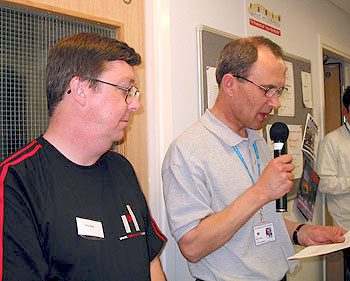 Chris and I spent our first year in the Apprentice Training School which was on a floor in one of the many large buildings on Blyth Road. To our delight, the building was behind the vinyl pressing plant, so many of the apprentices used to like walking through the middle corridor of the plant to get out to the back building. The smell of the vinyl and the sight of records being pressed and staff sitting in booths testing samples was terrific. My recent return visit shows the building that housed the Training School is now just a shell and in front of it, the pile of bricks is presumably all that's left of the vinyl plant!
Chris and I spent our first year in the Apprentice Training School which was on a floor in one of the many large buildings on Blyth Road. To our delight, the building was behind the vinyl pressing plant, so many of the apprentices used to like walking through the middle corridor of the plant to get out to the back building. The smell of the vinyl and the sight of records being pressed and staff sitting in booths testing samples was terrific. My recent return visit shows the building that housed the Training School is now just a shell and in front of it, the pile of bricks is presumably all that's left of the vinyl plant!